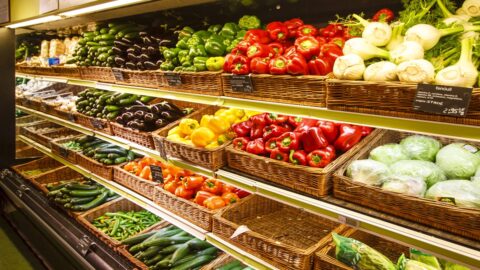Are you curious to learn how to combine our love for fresh produce and sustainability? I have some incredible insights to offer on creating a Sustainable Fresh Food Marketplace that caters to taste buds and nurtures our planet! Let’s dive in together into a world full of green crunchiness!
1. Firmly Grounded in Local Agriculture:
Local agriculture is at the core of any Sustainable Fresh Food Marketplace. By supporting local farmers, you are not only guaranteeing freshness and cutting back carbon emissions associated with transportation costs, moreover, they’re true heroes in sustainability cultivating goods with care and dedication! So, let’s establish strong bonds between ourselves and local growers!
2. Acknowledging Seasonal Sensibilities:
Imagine indulging in succulent strawberries during spring and crisp apples during fall that is the magic of seasonal produce! Building a sustainable fresh food marketplace involves celebrating nature’s cycles by aligning our offerings with seasonal cycles. By doing so, we reduce energy intensive practices like greenhouse cultivation and refrigeration while enjoying better tasting seasonal fruits and veggies, too it’s a win win scenario!
3. Say No to Excessive Packaging:
Imagine this: mountains of plastic packaging surrounding our fresh produce could be much more appealing! To embrace sustainability, let’s eliminate excessive packaging waste by encouraging reusable bags or offering eco-friendly alternatives. Minimizing waste packaging waste takes us one giant step towards creating a greener marketplace.
4. Engage Local Artisans:
Building a sustainable fresh food marketplace involves more than selling fruits and vegetables, it requires creating a community of producers who share our commitment to environmental responsibility. Collaborate with local artisans for products like homemade jams, organic bread or handcrafted cheese, this diversifies your offerings and strengthens local businesses while creating a sense of unity within your marketplace.
Educate and Empower:
Running a sustainable fresh food marketplace goes beyond transactions, it requires education. Arm your customers with knowledge of the benefits of sustainable choices by using signage, social media or workshops to share this information about the environmental impacts of their choices. Once they see how their decisions contribute to sustainability efforts, they’re more likely to become active contributors on this journey.
Prioritize Waste Reduction:
Food waste can be an enormously daunting challenge, but we can rise to it head on as sustainability champions. Implement practices to minimize it, such as donating unsold but still fresh produce to local charities, composting organic waste, or exploring partnerships with farms for animal feed production every effort taken towards waste reduction brings us one step closer towards an eco-friendly fresh food marketplace.
Energy-Efficient Practices:
From lighting to refrigeration, energy consumption plays a pivotal role in ensuring the viability of your marketplace. Consider investing in energy efficient appliances and lighting systems while tapping renewable energies like solar power for sustainable power sources. By reducing carbon emissions, you are contributing to a healthier planet and setting an example to others within your industry.
Establish a Community Hub:
Building a sustainable fresh food marketplace involves more than transactions, it requires community creation. Create an inviting space where customers feel connected to the source of their food. Host events, workshops or farmers’ markets to strengthen relationships between producers and consumers and foster loyalty with each other by reinforcing our shared commitment to sustainability.
Welcome Technology Responsibly:
In our tech driven age, leveraging technology is inevitable but let’s use it responsibly. Implement digital solutions for inventory management, order processing, customer engagement, and innovative apps connecting consumers directly with local farmers. Technology can be an invaluable ally when strategically creating sustainable fresh food markets.
Support Sustainable Practices Beyond Your Market:
Extend your commitment to sustainability beyond your marketplace by supporting initiatives that foster sustainable agriculture, conservation, and community development. Your participation will contribute towards an evolving global movement toward creating a more eco-friendly world.
Conclusion:
Sustainable fresh food marketplaces are more than a trend they’re an obligation. Incorporating local agriculture, seasonal tastes, reducing packaging waste, and collaborations with artisans while prioritizing waste reduction measures and adopting energy efficient practices will prioritize the legacy of the suite within your marketplace and beyond it.
Let’s embark on this green journey and build a fresh food marketplace that excites our taste buds and supports the planet! Let’s be the change we want to see by making sustainable yet delectable decisions together!
Click Here: Sustainable Farming Practices

Comments